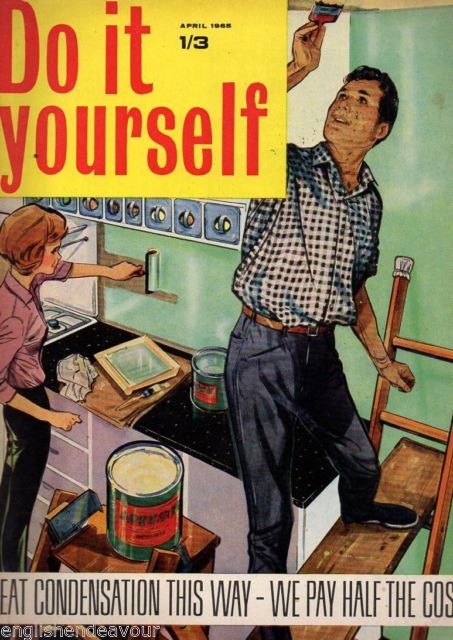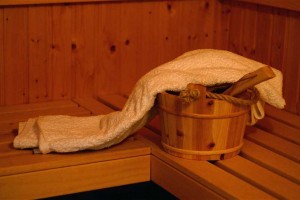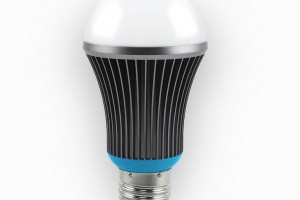I may get commissions for purchases made through links in this post.
You know it when excess home moisture raises its ugly head.
You’ll spot foggy windows, smell a mildew or musty odor, or your skin feels clammy.
If it has been around for a while it had the chance to mark its territory. Damp spots, mold, and rotting wood are signs the soggy enemy is taking over the place.
But even if there are no indications (yet) your home’s atmosphere is too humid it’s wise to measure and control because..
- it will make you feel better both physically and mentally (studies show that how happy you feel is directly linked to humidity levels) and,
- keeping more money in your pocket due to reduced heating bills is also a nice reward.
So how to reduce home humidity levels?
Often, simple measures can make a big difference. In other cases more drastic actions are necessary.
Here’s an overview of simple tips and more radical solutions on how to combat excessive indoor humidity. Easiest applicable measures are mentioned first.
How to Lower Home humidity?
 There are ways to lower the humidity once you become more aware of what is raising the level in the first place.
There are ways to lower the humidity once you become more aware of what is raising the level in the first place.
Actions
- First and foremost, ventilate. Especially the areas that create moisture, like the kitchen and bathroom. When vent fans are present, make sure to turn them on and/or leave them on longer. Especially in the kitchen, bathroom, and basement. If not, consider having them installed by an electrician.
Cooking as well as showering but also washing machines and dryers affect the amount of moisture found in the air, especially when people take long, hot showers.
- If you do not have exhaust fans or a ventilation system, you can crack a window for a few minutes to dry the air out, especially in the bathroom areas that tend to hang onto additional moisture for longer periods.
Mathematically speaking, it only takes between four and six pints of water to raise the humidity level inside of 1,000 square feet from a mere 15% to 60%.
The amount of people within the home can affect how much humidity is in the air as well. One person breathing produces about ¼ cup of water within an hour’s time.
- Ensure that exhaust fans in kitchens, bathrooms, and laundry rooms vent to the outside. Installing vents and attic fans can help too.
- Increase indoor temperature because warm air can hold more moisture (relative humidity decreases if temperature increases).
- Use fans to increase ventilation
- Take colder, shorter showers. Use a low flow showerhead or shower under a less powerful stream by not fully opening the tap. (personally, I find showering with the tap partially open just as pleasant)
- Becoming mindful of the indoor and outdoor temperature also can ease the concern of proper humidity within the home. What is the current temperature inside versus outdoors?
- Are you keeping your home much cooler than the suggested temperature? If that answer is yes, then minor adjustments to the humidity level are easily adjustable.
- Run the AC. Since this option is costly other possible measures are preferred.
- While cooking, try to cover your food and take full advantage of the exhaust fans in which your home is equipped. Oven and stove-top cooking produce more moisture. Slow cookers contribute less to indoor humidity.
- Vent clothes dryers outside.
- If there is a humidifier or vaporizer in the home, turn it off for a little while or simply turn it down. Most humidifiers or vaporizers on the market today have a turn dial, or button to adjust the level of vapor or water you would like dispersed into the air. (a no-brainer but added for the sake of completeness)
- It’s recommended to only use induced draft, sealed-combustion, or power-vented boilers, furnaces, and water heaters.
- Air-conditioning drain lines and drip pans should be kept clean and unobstructed.
- Temporarily place house plants outside or concentrate them in one room. Plants release moisture vapor to the air. Especially when you have lots of plants their role in home humidity levels can be significant. Also make sure not to overwater them.
- Freshly cut firewood contains large amounts of water that evaporates when stored indoors. Better keep it outside.
- Keep downspouts and gutters clean. Adjust downspouts so they carry water farther from the house. Restrict watering plants to bare necessity. Prevent water from pooling at and around the foundations by a descending surface.
- You may also want to use a dehumidifier if maintaining your humidity has become an issue or you live in an older, less ventilated building. Dehumidifiers are commonly placed in basements, since they are underground and do not get a lot of warmth or direct sunlight, or in bathrooms without windows or specific areas in the home that require moist removal. Dehumidifiers work best with closed doors and windows. In order to ensure proper circulation dehumidifiers need to be placed away from walls and furniture. Except for models that have an air vent on top.
Types of dehumidifiers
Various dehumidifiers exist. From small portable devices to large whole-house dehumidifiers utilizing basically three different technologies.
- Desiccant dehumidifiers use desiccants which are substances that naturally absorb moisture (i.e. the little packets of silica gel included in electronics). Best for lower temperatures and moderate humidity. Can withstand freezing conditions as no water is produced. A well-reviewed unit is the Eva-dry Renewable E-333 Wireless Mini Dehumidifer.
- Mechanical /Refrigerant dehumidifiers essentially work like your home’s fridge or airconditioning. Air passes across a cooled metal plate (coil) condensing the airborne moist which then drips into the water tank. Contrary to an AC these units slightly increase air temperature. Best suited for moderate to high humidity levels and moderate to warm conditions as this type of humidfier does not work well in cooler conditions. A popular choice is the best selling Frigidaire FAD704DWD Energy Star 70-pint Dehumidifier.
- Peltier dehumidifiers are usually recommended for small areas such as average size bedrooms, bathrooms, but also RVs and closets. Although they are somewhat less energy efficient these units are valued for being quiet and efficient. Recommended product using peltier technology: Gurin Electric Compact Dehumidifier
Structural measures
Things to adjust in and around the home.
- Carpet may retain moisture. If you’ve tried many things perfusely, consider replacing the carpet. Another benefit, humidity-thriving dust mites love carpet.
- The addition of tubular or wrap insulation on pipes will also help. Insulating tubing for cold water pipes help decrease “sweating”.
- Due to the warm surrounding air, and the cold water of the tank and pipes, toilet tanks and water pipes are another source of condensation. Adding a mixing value to the water supply line and rigid waterproof insulation on the tank, will reduce these effects.
- Cold surface moist can be controlled by adding storm windows, plastic film on the windows, making any repairs to windows or window frames, installing weatherstripping and caulking both inside and outside of the window. This will prevent cold drafts and lower heating costs.
- Vinyl wallcovering and other impermeable wallcoverings can trap moisture as well as keep it out. When moisture is trapped this can lead to mold growth.
- Insulate crawl spaces with a plastic vapor barrier.
- Concrete basement walls can be a huge source of excess humidity. If they haven’t been waterproofed from the outside you could try to waterproof them with products such as Xypex or Drylok. Results however are uncertain. Repair wall cracks.
- In order to have rain water flow away from the house ensure that the yard next to the foundation slopes away from it (generally at a rate of 1 inch per foot). This helps prevent water to enter crawl spaces and basements. This, however, does not solve the problem of ground water that’s pressuring its way up trough the basement flour and walls if these are not sufficiently waterproofed.
- To battle moist coming from the basement floor consider having a sump or a French drain installed. A sump is basically a hole with a pump in the concrete floor. A French drain, or perimiter drain is a piping drain system that’s an extensive version of the sump.
- Have your foundation treated with Hydroclay (the stuff that’s used to waterproof tunnels). This water absorbing clay seals the basement in the areas where the water infiltrates.
- Loose shingles and flashings may leak rain into attics, walls, insulation and other areas. Inspect the roof yearly to avoid such leaks.
What to do with humid crawl spaces?
Bare earth flours are a huge source of moisture. As moisture evaporates from the earth, houses built on such crawl spaces will experience higher humidity levels. Using a vapor retarder (polyethylene or heavy plastic sheets) as a ground cover in crawl spaces will prevent moisture problems. If a vapor barrier is not used, this humidity can become a breeding ground for mold, fungus, mildew and a host of other problems.
Proper crawl space ventilation is also essential.
- When there’s no vapor retarder, 1 square foot of free vent space is required for every 150 square feet of ground exposed crawl space.
- If a retarder is being used, the numbers change to 1 square foot of vent per 1,500 square feet of covered, ground crawl space.
- If the crawl space vents include louvers and/or screens, the double the amount of ventilation is required to make up for the reduced air circulation.
What you should know about dehumidifying house plants
You may have heard about houseplants that are known to absorb moisture from the air. Tropical plants called epiphytes such as English Ivy, Peace Lily, Reed Palm, Boston ferns and Tillandsia are plants that get all their water from the air instead through roots.
They are often touted as house plants that filter the moist out of the air thus reducing hazardous humidity levels in you home.
But you know what they say, if it sounds to good to be true…. it probably is.
All plants give off more water to the atmosphere than they absorb. Think about terrrariums and greenhouses where the air is always humid. So contrary to what is sometimes claimed, these plants are not natural air dehumidifiers. At most they add less to humidity then other types of plants.
Do not underestimate the importance of proper humidity levels
Improper indoor humidity levels are a common home hazard that is often underestimated. Dust mites and other sickmakers such as allergens, pathogens, and noxious chemicals are more abundant in humid conditions.
Allergies, headaches, asthma symptoms such as wheezing, shortness of breath or a chronic cough also indicate you could benefit a lot from lowering moist content in the indoor air.
Dehumidifiers, ventilation, air conditioning, humidity monitors, weatherstripping, caulking, insulation, interior adjustments and lifestyle changes can all help ensure ideal home humidity.
These actions may involve some costs but in the end they will safe you money and improve the health of you and your family members.
Don’t forget, ideal humidity levels for your home are less than 60% in the summer and between 25 40% in the winter.
- The bedroom requires about 50% relative humidity, all year round to reduce dust mites and allergens (source: PubMed.) Proper humidity levels, in other words, sufficient moist, is easier on your mucous membranes and experts claim it helps you sleep better too.
Got rooms in the home where the opposite (too dry air) is at play?
























Reducing humidity is always a challenge especially for moms out there. Aircons, fans or evaporative coolers are the best option for appliances but still also depends on good ventilation.
Owning a dehumidifier is the best solution for small area. Tks for share
We (wife & I) are 10+ years into experimenting with low RH % (upper 20s to low 30s) to alleviate wife’s “hot flashes” in our house. Our Santa Fe Rx (PN 4023673) dehumidifier maintains the RH % in our open LR-DR-K area usually from 26 to 30 %, except when the condensate pump fails due to being overworked – on our 3rd pump with other 2 being used for parts.
As long as RH is below 32% she is “flash” free.
Until this year our adjacent bedroom was from 28 to 32 % but the shutdowns this year have allowed the bedroom materials to re-humidify and now we can get only 35 to 40 % there. Preparing to buy a constant drain smaller dehumidifier for the bedroom but not sure of their low capabilities with their electronic controls. Our Santa Fe unit uses a non-electronic dehumidistat that allows it to get into the low 20s if we want to. Electronic units only note to 30%.
If anyone knows of a constant drain smaller (shorter than 24″) unit that gets 28 to 32 % RH please reply.
hi, how much energy consume your santa fe unit
My parents have a house in the mtns of nc! This is a vacation home and they go abt 2 times a year! The basement has some moisture in the air! I know a dehumidifier would work but that as to be emptied! What can done year round to help with this
There are several continuous operation options, varying in usefulness depending on your parents situation. You could equip the dehumidifier with a hose to let the water flow into the floor drain or basement sink instead of into a tray or tank. For this you’ll have to place the dehumidifier high enough so that it uses gravity to drip the water into the floor drain.
If you don’t have a floor drain or washing machine drain in the basement you could consider getting a dehumidifier with built-in condensate pump (continuous drainage option) which will pump water up to a sink or drain to a nearby room such as the bathroom or washing room.
Another way to stop having to empty buckets is to get an add-on pump kit for your dehumidifier. For example this pump with vinyl tubing (make sure this setup fits your existing dehumifier). The humidifier drips into the pump and when the water level is high enough the pump will run until it’s empty again. Hope this helps.
!
lol
Get s dehumidifier with a built in pump. Drain the pump in the floor drain or a sink. Costco….$159.99.
Hi I’m Gerry,
We purchase an older manufactured home in the Villages in Lady Lake Florida, its been empty for a while we just moved in and it full of moisture and musty smell, so we cleaned out everything and had the carpet steam clean got rid of the old furnisher that was in the house, the musty smell was gone ,2 days later its coming back, we set up the dehumidifier to take that humid out but theys know water accumulating in the tank , the laminate floor is damp like and carpet is a little damp as well. the temp is set at 74 right now but nothing seem to help, we thought of opening all the windows for a while to air it out , but afraid it s going to cause more humidity. don’t know what to do.
help please> Sincerely Gerry
Hi Gerry. I assume there’s a leak or another moisture source such as basement walls that let moist in that needs to be fixed.
Get a hydrometer from lowes to see what humidity is running. Should have water in bucket when running dehumidifier. Can set up with a hose ran thru floor to the outside so that it runs all the time.
You mean hygrometer right?
Hello everyone, just reading this useful article, and everyone’s comments, and wish to share a thought for you all, as here in the rural south of England and 30 miles inland, half way between the coast and London the humidity has been a constant average of 85-95% which at times is uncomfortable at the very least not to mention health related issues, I would highly recommend the use of an old fashioned open fire, it sucks out the existing damp air and heats up the whole room, the remaining home needs a gentle heating to the other rooms, I further employ the use of a marine engine heater, which consists of a electric powered oil filled tube, that’s placed under the bed, if I forget to turn it on well before retiring for the night, then the bed can feel damp and uninviting, resulting to the use of hot water bottles, and cups of hot chocolate, and then not to go into to much detail but a little bedtime passion, always guarantees warmth with sleep, and my wife says it helps her breathe better, as she suffers, with loss of breathe though the night. Her theory is it raises her blood pressure, resulting in stronger breathe control. She changes bedding each week, and washes walls ceilings, and windows with hydrogen peroxide, a solution she makes her self, ( she has a degree in science,) so please don’t start splashing it about before your a where of the facts. As it was Christmas I bought a dehumidifier (made in Japan oppersite to blunt) based on plasma technology, so hopping its the best, I placed our hydrometer in the bedroom on the head of the bed, it was reading 87% on the wall by the front entrance, I left it to adjust to the new environment and surprisingly in went down to 75% and remained at this, so after two hours turned on the dehumidifier and shut the door to the bedroom, and have not turned on the under bed heater, we retired to bed 6 hours later, hydrometer now at 55% and holding tank is half full approximately 2 pints..so it does work but have to keep doors shut…had it not worked I would have returned it back to the shop, in exchange for a sheep skin rug to go in front of the open fire, and sleep on that…wink wink.
One last think on ventilation, whilst I know it’s important, there are times it needs to be closed due to it becoming a thermal bridge at due point, as in when the in coming air condensates, when hitting the warm air.
So really is an exact science, with variables. Good luck it helps too!
Hi everyone great advice here. My question is last year we bought 11 Alside ultra max windows had attic reinsolated in hopes condensation would stay off windows with no luck we are wiping down windows everyday. We purchased a dehumidifier and run it constant. We are in the Minnesota cold so some of the moisture I get the majority I don’t. Do I need more insulation in the outside of house plastic on the windows? Feeling frustrated and needing answers..thank you.
Did you ever figure out your problem, Julie? We’ve go the same issues, Laurel Mountains in Pa.
Help me I just moved to Longview Washington from Denver Colo and having lots of hot flashes My home was built in 1910 but the owners before us updated this beautiful home but I have problems with the humidity in this home. I’m suffering with this manger problem. Please give me good advice to help me. Thank you .
how about using wall exhaust fan? can it lower the humidity? i’m finding the solution for my room.
It could help, but if it will suffice remains to be seen.
This is a really great article, but please fix the typos of “moisture”. My OCD almost had me stop reading because the typos were that frequent.
Wow! Great information and tips right here. I was waiting when reading to stumble upon basement foundation and there it was! cracked foundations are a main contributor to moisture issues, if you have a basement of course. This was my problem for quite some time, until I finally realized what the problem was. Crack injections are cheap and easy, yet you need to ensure your service provider is utilizing the right tools and materials. Check this out here: https://staydrywaterproofing.com/services/foundation-repair/
Many contractors and service providers of home waterproofing and what not, will often fill cracks haphazardly. Ensure the company you’re hiring uses the right stuff.
These 19 tips are really great. I will follow your guide for my home. Thank so much !
Running aircons emit HCFC’s and HFC’s and should be strongly discouraged wherever possible. The astronomical increase of these gases will destroy the ozone layer but nobody seems to be making a fuss about it.
We (husband & I) do! That’s one of the reasons we don’t have A/C at home.
We also don’t have a/c and live in the Midwest and are dealing with high humidity levels in pour home. We just purchased last December and during the summer on very hot days we close the windows and in the evening we open them to invite the sometimes cool air in. We use ceiling fans for air but noticed we have mildew in our kitchen cabinets and other places downstairs of our home. Our home is not conducive for central air we were told. We have to get a ductless system called mini splits but can’t afford them at this time. Any suggestions on getting rid of the mildew build up? Thanks in advance.
You might want to look at what HD has for your kitchen cabinets and other such places:
Hydrosorbent Silica Gel Dehumidifier Dessicant Safe Pack
Absorbs moisture without using electricity. Protects your Items by keeping them dry.
Protects 33 cu. Ft. of space each. Reuse by heating in oven, etc.
As described above, we use a whole house mechanical dehumidifier to lower our humidity to around 28 %RH and we live next to a river. We also use dessicant packs inside our safes.
Which brand of whole he dehumidifier did you install? How did you tie into the existing HVAC system?
Refrigerants such as you named are NOT released by the *operation* any refrigeration system that is working properly and has no damage to the sealed system. Releases of said gasses only happen generally If such system is physically damaged, improperly repaired, improperly recycled, or disposed of improperly.
Couldn’t have said it better myself… Also most Way’s of heating do much more damage to the overall environment then properly installed HVAC systems.
If an air conditioner is emitting hfc’s it’s leaking and needs to be serviced. Refrigerant is not a consumable component in a system, it should remain sealed in the system forever if the system is designed and installed correctly.
Learn before you post, the world will be better for it
yes, this.
global waming hoax
Bought humidity unit for our basement. It removes large amounts of moisture from the air very quickly and noticeably improved conditions in our basement. This was a good value for us. It was exactly what we needed to bring the mold issue under control in our basement.
I find that dehumidifiers often produce a lot of excess heat. By Gregg L. Friedman MD
excess heat and very, very expensive. They definitely reduce the moisture.
As an MD, it is important to know that mold is causing a lot of unnessary medical issues. I suffered 5 months from a rash that 7 dermatologists could not solve. They all said it was contact dermatitis and not one suggested a mold allergy. I spent hundreds of dollars on creams and ointments they prescribed, changed all my laundry detergent. Thought it might be mites, poison ivy, etc. If you go on line, you will find thousands of people who are suffering from imaginary bugs they feel crawling on them. ITS MOLD!!!. I discovered the mold through testing. Had it remediated, and now rash has gone.
Your mold allergy might also be a sign of overall decreased immune health and ultimately, gut health. “Leaky gut” often leads to skin rashes and fatigue. Should your rash reappear, or you have other symptoms like decreased energy or brain fog, seek out a chiropractor or M.D. who works with functional medicine/nutrition to restore your gut health.
How did u find the mold? I can’t find it in my home. I been very sick with all the symptoms of mold . I have the bad itching also. I’m hesitancy to hire someone to come check my home because I don’t trust them. Please reply to 2815080520 thx
We live in NW Florida & had mold growing in our HVAC ducting. I got really sick, my husband did not. Some of the online mold testing websites are scams but this one is legitimate, https://www.homemoldtestkit.com/. If it is in your ducting, you can hire someone to use professional ozone equipment or buy your own & do it yourself to kill the mold. We now ozone twice a year just as a precaution. There is also an enzyme based, nontoxic product, Moldzyme, that is excellent, https://moldzyme.com/. Phillip Fry was an immense help to me at http://www.moldmart.net/. Try to stay outside as much as you can in fresh air until you have completed your mold cleanup. And there are nutritional supplements that are helpful in helping your body rid itself of mold.
What’s the supplements? I’m suffering from mold exposure. It’s effected my nervous system
But they are primarily used in the months where you would be running other heating systems anyway. Not only do they contribute to the heat of the space they are in, but they lower the humidity thus making it feel warmer at lower temperatures. They are not necessarily expensive to run but of course you need to make that decision based on the costs associated with all your heating and other systems.
Actually high humidity is usually worst in the summer, heating systems usually dry out the air on their own (often making the air drier than the sahara desert, which is why your lips crack in the winter) so dehumidifiers aren’t needed in most winter climates. Also, and this is a mistake on this website because it suggests otherwise, moist air feels warmer so if you want it “warmer at lower temperatures” you want humidity. https://www.google.com/search?q=%22moist+aire+feels+warmer%22
I had a minor problem on my basement that was remedied by cheap product i bought online.. It helped me control excess moisture and condensation until i get my basement properly sealed and fixed. I cant remember the exact name of the product but its similar to what i found below.
https://www.amazon.com/dp/B01M18AZBB?m=A3L9UM20XOC6D9&ref_=v_sp_detail_page
Our home always has high humidity. We use a dehumidifier every day but it creeps back up to 60%+ often. We’ve had issues with mildew for years. Our house is over 50 years old with original Windows. Should we consider window replacements?
I bought a 70 year old small ranch, updated with foam backing board under fiberglass siding and insulated windows. Added insulation in attic. Solid concrete basement. No vents in bath and kitchen. Summer humidity always high. 65%+ I suspect the work was done to combat the humidity and make the house marketable. I am considering a fireplace as that would serve as a summer vent? What do you think?
Great tips, Thanks for sharing valuable article. To prevent humidity from becoming a problem in my apartment in the first place, looks like we can take simple steps to reduce the amount of moisture that we allow into the air.
hiiee everyone… in Summer in poultry farms there is big issue to control humidity in sheds where layer chickens are present… so do anyone have idea how to reduce humidty in Poultry farm shed during summer..
In my opinion we can control the low humidity with a humidifier, but if the humidity is high – very difficult to get rid of it
Wow, this is a great list, thanks for putting this all together. The tips for dealing with humid crawl spaces were exactly what I needed.
My friend thinks vapor barrier keeps the moisture outside form getting in. Is that true?
I argue that winter is dry and the moisture outside is not the problem. If air conditioning your house in the Summer, then outside humidity might be a problem.
If you and your family are suffering the discomfort of a muggy, hot and humid home, help is here. Since 1973, our team of experienced and highly trained technicians have solved indoor air issues for home and business owners across Tampa, St. Petersburg, Clearwater and Sarasota, Fla. Want to learn more about our methods of in-home moisture control? Call us today at (888) 572-7245 or visit us online to request a free estimate on all of our AC and plumbing services.
What is your companies website?
We (wife & I) are 10+ years into experimenting with low RH % (upper 20s to low 30s) to alleviate wife’s “hot flashes” in our house. Our Santa Fe Rx (PN 4023673) dehumidifier maintains the RH % in our open LR-DR-K area usually from 26 to 30 %, except when the condensate pump fails due to being overworked – on our 3rd pump with other 2 being used for parts.
nice !
your house has too much moisture
Really thanks for the tips, they helped me a lot, in my country, most of the time we are in winter and because it rains a lot, I will try these methods, I hope they work, thank you.
I’d like to second the thing that was said above.
We really like this.
Wow! great tip. But if you add what is proper humidity level. It’s helpful for me and others.
Bought a brand new townhome a year and a half ago, there was black mold in the basement approximately 2 weeks after I moved in, builders hired someone to scrape it out and told me at 71 degrees my ac unit was working too hard and to keep temp at 73 lol. Then pink mold appeared in 2 of 3 bathrooms. The basement can get humid, but oddly enough the mid and top level have the most humidity according to my hygrometers. HVAC workers came out, checked for cracks to see if air was leaking in with a thermal imaging device(forget what its called but rented one myself as well), no luck. Confirmed HVAC unit was perfect size for the home as well as I was told an oversized unit could create excess moisture in the home as well. Have a nice dehumidifier unit in the basement now but it does not help on the upper levels. I really don’t want to put large dehumidifiers on every floor of the new house but I seem to be running out of options. Home inspector was stumped, builders were stumped and said there was nothing else they could do(of course), and HVAC people were stumped. With the help of diluted bleach I thought I got rid of the pink mold last fall, however it is now spring and the pink mold has come back in all forementioned locations at almost the same time. Humidity is between 70-85% without dehumidifier depending on the outside weather. I thought this may be health hazardous and the builders would be forced to address it but they refused to do anything. Any recommendations?
Try a marine dehumidifier. They are cheap and quiet and work in small spaces, you could place them on the various floors of your home. Also candles have a bad rap but I have found that burning them often does improve a room’s smell, humidity level and mold level. It is a long gradual process but it has worked for me in a room in house on the Chesapeake Bay where we have extermely high humidity and hot weather.
Yes
Thank you very much for this great article! I’ve learned a lot about humidity at home! 🙂
We have a geothermal 2 zone heat pump system. About 3 years ago we had to replace the downstairs unit. After that our humidity levels went crazy. I have had 3 different hvac companies here to look at the unit and they all say it’s working properly. And the unit is not oversized. In the summer sometimes RH is above 90 and at the register it’s 98%. The register always is the highest reading. We have s basement that this unit serves. Sommers are hell. Doors swell shut. Can’t have salt. Mold in closet and cabinets. No signs of water in basement. Any ideas?
Moist air feels warmer, dry air cooler, so in the summer yes dehumidify, but in the winter (if you heat your house) you’ll save more with humidity. One thing this article seems to suggest is that the AC will dehumidify (see “Run the AC” suggestion). That is incorrect. Heaters dehumidify, AC units will not and in many cases humidify the house simply by the fact that a cooler house draws moisture into it. There’s no way around this other than to get a dehumidifier.
I like the tips on how to reduce home humidity. I have been looking for a solution to this problem and I found your article very useful. It is really great that you wrote such an informative article and shared it with us.